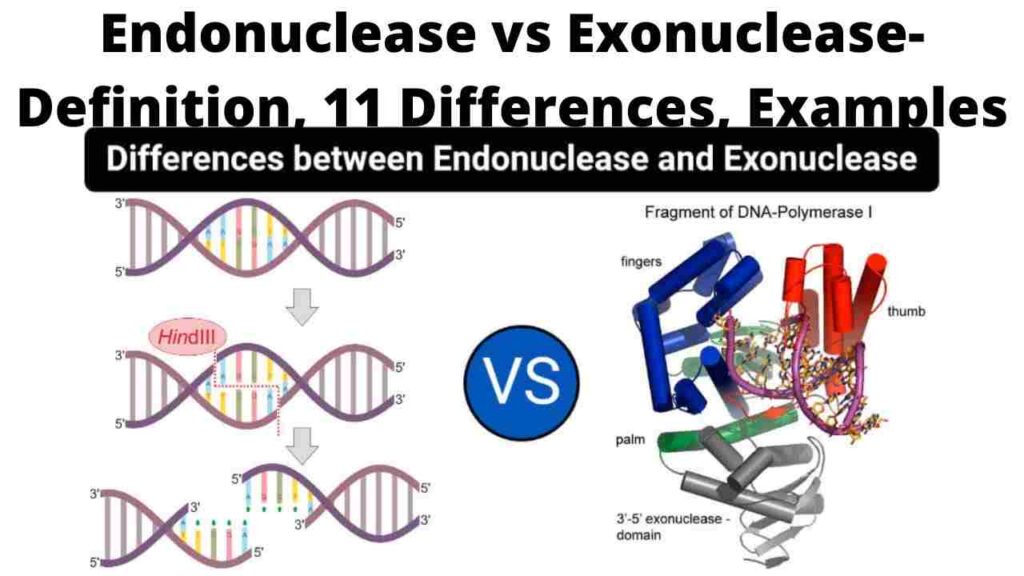
Explore Key 15 Difference between Exonuclease and Endonuclease
Exonucleases and endonucleases are two distinct enzymes that play crucial roles in nucleic acid metabolism and DNA repair processes. Understanding their differences can provide valuable insights into their functions and mechanisms. Here, we explore 15 key difference between exonuclease and endonuclease, shedding light on their unique characteristics.
15 Difference between Exonuclease and Endonuclease
Structural Location: Exonucleases primarily act at the ends of DNA or RNA molecules, while endonucleases cleave within the molecule.
Cleavage Site: Exonucleases remove nucleotides one at a time from the end of a DNA or RNA chain, whereas endonucleases cleave the chain internally at specific sites.
Mode of Action: Exonucleases degrade nucleic acids in a processive manner, whereas endonucleases initiate localized cleavage events.
Processivity: Exonucleases possess higher processivity due to their ability to continuously degrade nucleotides in a sequential manner.
Substrate Specificity: Exonucleases exhibit more specificity towards their substrate, recognizing the type of nucleotide being removed, while endonucleases have specificity towards the recognition and cleavage of specific DNA sequences.
Repair Function: Exonucleases play a role in DNA repair by removing damaged or mismatched nucleotides, while endonucleases help in the excision of damaged DNA fragments.
Size Requirement: Exonucleases require a minimum length of nucleic acid chain to bind and initiate degradation, whereas endonucleases can cleave short DNA or RNA fragments.
Enzymatic Mechanism: Exonucleases utilize a hydrolytic mechanism involving the addition of water to break phosphodiester bonds, while endonucleases use various mechanisms like hydrolysis, transesterification, or metal-ion catalysis.
Cellular Localization: Exonucleases are found in both the nucleus and cytoplasm, participating in different cellular processes, while endonucleases are predominantly localized within the nucleus.
DNA Replication: Exonucleases proofread newly synthesized DNA during replication, excising and replacing incorrect nucleotides, whereas endonucleases do not participate directly in DNA replication.
Role in Genetic Recombination: Exonucleases participate in DNA recombination processes, facilitating strand exchange and DNA repair, while endonucleases are involved in generating DNA breaks required for recombination.
Degradation Rate: Exonucleases degrade nucleotides at a relatively slower rate due to their sequential removal process, whereas endonucleases can cleave DNA rapidly at specific sites.
Protein Interactions: Exonucleases often interact with other proteins or cofactors to regulate their activity, while endonucleases can function independently in many cases.
Repair Pathways: Exonucleases are associated with various DNA repair pathways, including base excision repair and mismatch repair, while endonucleases participate in nucleotide excision repair and homologous recombination.
Biological Functions: Exonucleases are involved in diverse cellular processes, such as DNA replication, repair, and RNA processing, whereas endonucleases play a significant role in DNA repair and recombination events.
By appreciating these 15 difference between exonucleases and endonucleases, we gain a deeper understanding of their unique roles in maintaining genome stability, regulating genetic information, and contributing to cellular homeostasis. These enzymes, with their distinct characteristics, form the cornerstone of nucleic acid metabolism and ensure the integrity of our genetic material.
Also Read: Explore 15 Key Difference between Cheque and Bill of exchange